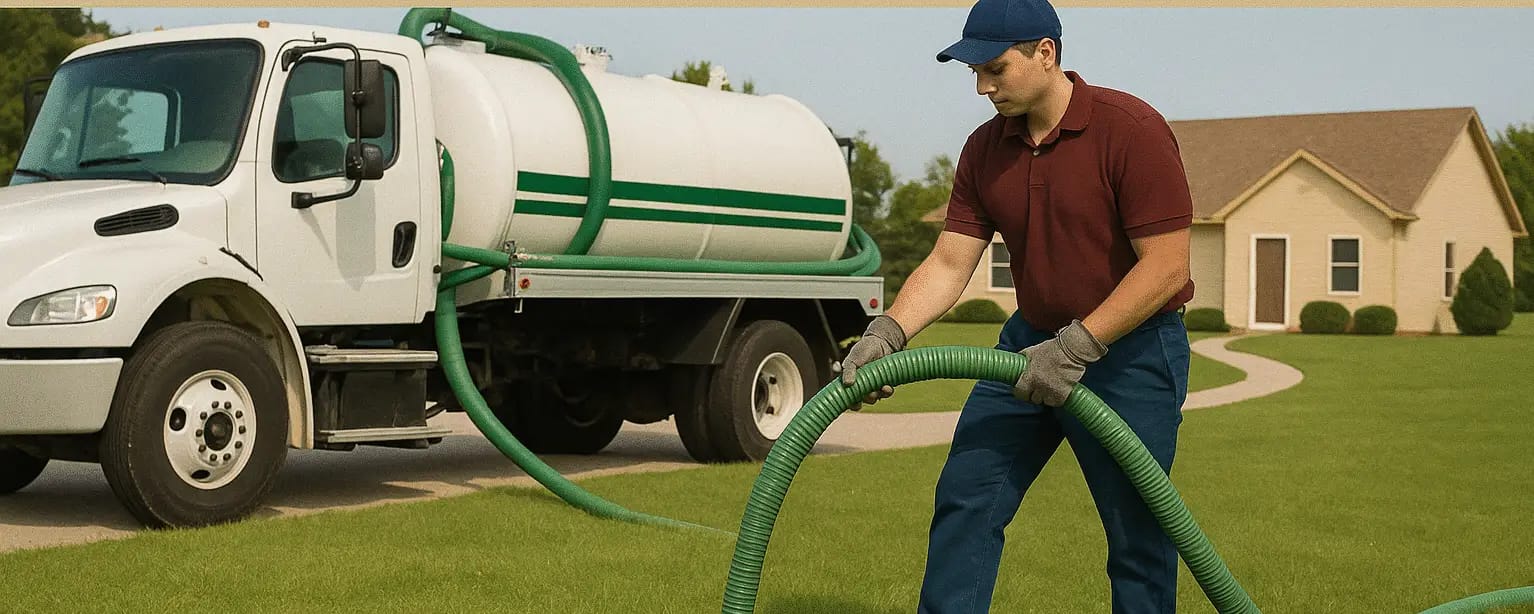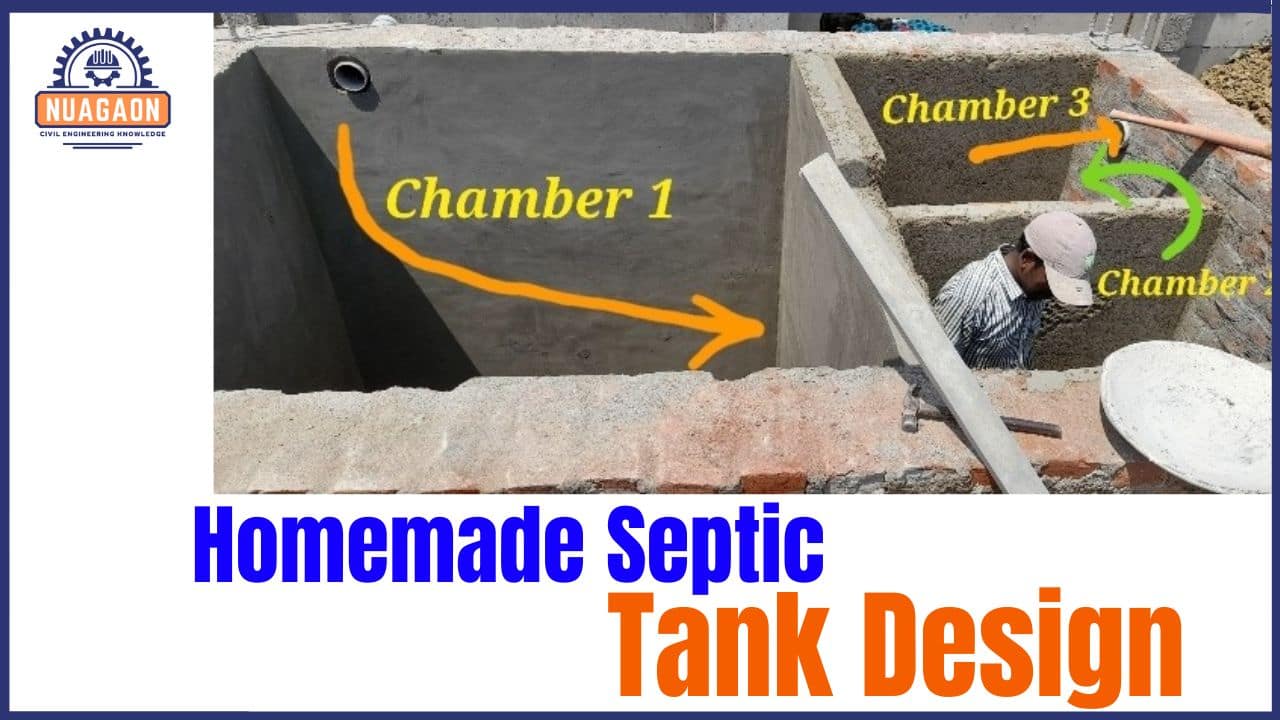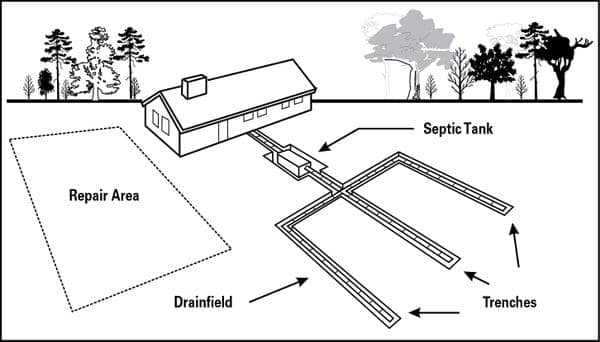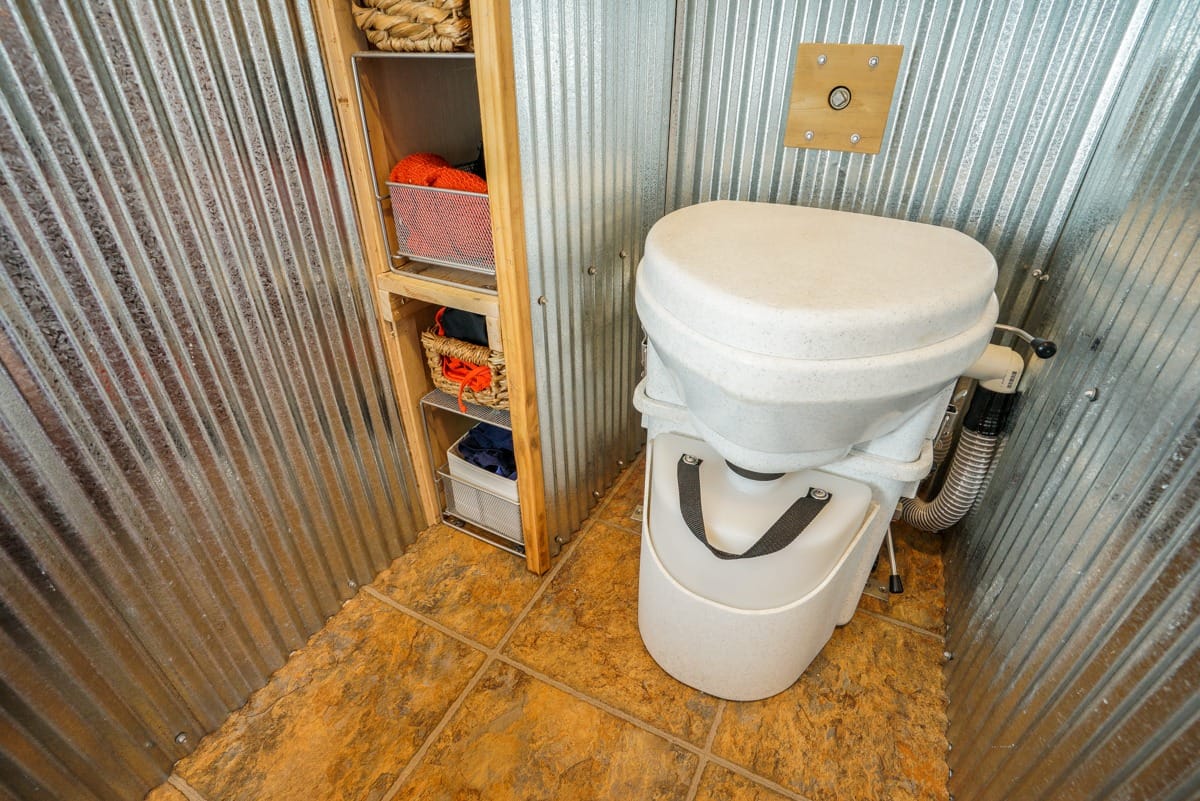How Much to Service a Septic Tank
The Ultimate Guide to Septic Tank Services: Costs, Maintenance, and Everything You Need to Know
When it comes to home maintenance, few systems are as crucial yet overlooked as septic tanks. These underground workhorses silently process household waste day after day, but when problems arise, they can quickly turn into expensive nightmares. In this comprehensive guide, we’ll explore everything you need to know about septic tank services, from costs to maintenance tips, helping you make informed decisions about your home’s waste management system.
Understanding Septic Systems: The Foundation of Rural Waste Management
Septic systems serve as private wastewater treatment facilities for homes not connected to municipal sewer lines. Typically found in rural and suburban areas, these systems process and filter household waste through natural decomposition processes.
“A properly maintained septic system is like having your own personal water treatment plant,” says Mark Johnson, a septic system specialist with over 25 years of experience. “When they work well, you never think about them. When they fail, it becomes all you can think about.”
A standard septic system consists of a tank and a drainfield. Wastewater flows from your home into the tank, where solids settle at the bottom forming sludge, while oils and grease float to the top creating scum. The relatively clear water in the middle, called effluent, flows out to the drainfield where it’s naturally filtered through soil before returning to the groundwater.
Types of Septic Systems
Before diving into costs, it’s important to understand that there are several types of septic systems:
- Conventional Septic Systems: The most common type, featuring a septic tank and gravity-fed drainfield.
- Alternative Systems: These include aerobic treatment units, mound systems, sand filters, and other specialized designs for challenging soil conditions.
- Chamber Systems: Using a series of connected chambers instead of gravel trenches for the drainfield.
- Drip Distribution Systems: Utilizing a network of drip tubing to distribute effluent across the drainfield.
- Recirculating Sand Filter Systems: Incorporating sand filtration to provide additional treatment before releasing effluent to the drainfield.
Each system type has different maintenance requirements and associated costs, which we’ll explore throughout this article.
The Real Cost of Septic Tank Pumping: An Essential Maintenance Task
Pumping your septic tank is perhaps the most common service you’ll need, and for good reason. Regular pumping removes accumulated solids that can otherwise lead to system failure.
Breaking Down Pumping Costs
The national average cost for septic tank pumping ranges from $250 to $600, with most homeowners paying around $375. However, several factors influence this price:
Tank Size: Larger tanks require more work and disposal fees. A 1,000-gallon tank (standard for a 3-bedroom home) typically costs $375 to pump, while a 1,500-gallon tank might cost $475 or more.
Tank Location: If your tank is difficult to access or buried deep, expect additional charges. Technicians may need to dig to find the access point, which can add $50-$250 to your bill.
Tank Condition: If your tank hasn’t been pumped in many years, it may contain hardened solids that require special equipment to remove, potentially adding $100-$200 to the cost.
Geographic Location: Like most services, costs vary by region. Rural areas might charge travel fees, while metropolitan areas often have higher base rates.
As septic system specialist Lisa Martinez explains, “Pumping costs might seem high, but they’re a fraction of what you’ll pay for a system replacement. Think of it as preventative healthcare for your home.”
The True Value of Regular Pumping
While pumping costs may seem substantial, the alternative is far more expensive. A neglected septic system can fail completely, leading to:
- Replacement costs of $5,000-$30,000
- Property damage from sewage backups
- Contamination of local groundwater
- Health hazards for your family and neighbors
- Decreased property value
- Potential legal liabilities
Most experts recommend pumping every 3-5 years, though this varies based on household size, water usage, and tank capacity. A family of four with a 1,000-gallon tank typically needs pumping every 3 years, while a couple with the same tank might stretch to 5 years between services.
Comprehensive Septic Tank Cleaning: Beyond Basic Pumping
While pumping removes liquid and some solids, a thorough cleaning addresses the entire system, including hard-to-reach areas where buildup occurs.
What Cleaning Entails
A professional septic tank cleaning typically includes:
- Complete pumping of all liquid waste
- Hydro-jetting to remove stubborn sludge and scum
- Inspection of baffles, filters, and pipes
- Removal of any blockages in inlet and outlet pipes
- Cleaning of the effluent filter (if present)
“The difference between pumping and cleaning is like the difference between rinsing and scrubbing your dishes,” explains septic maintenance technician David Williams. “Pumping removes what’s easy to get out, while cleaning tackles the stuck-on residue that causes problems down the line.”
Cleaning Costs Breakdown
Comprehensive septic tank cleaning typically costs $400-$800, depending on:
Tank Size: Larger tanks require more time and resources to clean thoroughly.
System Complexity: Systems with multiple compartments or specialized components cost more to clean.
Accessibility: Difficult-to-reach tanks or components add to labor costs.
Level of Buildup: Tanks with years of accumulated solids require more intensive cleaning efforts.
For example, a 1,000-gallon tank with moderate buildup might cost $450 to clean, while a 1,500-gallon tank with severe buildup could run $700 or more.
Many homeowners opt for cleaning every other pumping cycle, which provides a good balance between maintenance costs and system longevity.
Labor Costs: The Human Element of Septic Services
When budgeting for septic services, understanding labor costs helps explain why prices vary between companies and services.
Technician Expertise and Equipment
Professional septic service technicians typically charge $50-$125 per hour, depending on:
- Experience level and certifications
- Specialized equipment operation
- Regional labor rates
- Company overhead costs
Most pumping jobs require 2-4 hours of labor, while more complex services like inspections or repairs may take longer.
“Professional septic technicians aren’t just pumping waste—they’re evaluating your entire system’s health with each service,” notes industry consultant Robert Chen. “Their trained eye can spot developing problems before they become catastrophic failures.”
Additional Labor Considerations
Several factors can increase labor costs:
Emergency Services: After-hours, weekend, or holiday service typically incurs premium rates of 1.5-2 times standard hourly charges.
Difficult Access: Tanks that require digging, landscaping removal, or specialized equipment access add significant labor time.
Multiple Visits: Some services require follow-up visits, such as initial assessment followed by pumping or repairs.
Travel Time: Remote locations may incur travel charges, typically $50-$150 depending on distance.
A reputable company will provide a detailed breakdown of labor costs before beginning work, allowing you to understand exactly what you’re paying for.
The Role of Enzymes and Additives in Septic Maintenance
Biological additives like enzymes and bacteria are marketed as ways to improve septic system function and reduce pumping frequency. But do they work?
How Enzymes Work in Septic Systems
Septic additives typically fall into three categories:
- Biological additives: These contain bacteria and enzymes that help break down organic waste.
- Inorganic compounds: Often containing acids, hydrogen peroxide, or other chemicals to increase system efficiency.
- Oxygen-releasing compounds: These aim to create an aerobic environment to enhance bacterial activity.
Environmental engineer Dr. Sarah Johnson explains, “Natural bacteria already exist in septic systems to break down waste. Additives can supplement this process, especially after events that might have disrupted the bacterial balance, like heavy antibiotic use in the household or chemical disposal down drains.”
The Cost-Benefit Analysis of Septic Additives
Enzyme and bacterial additives typically cost $10-$30 for monthly treatments, or $120-$360 annually. Premium biological treatments may cost up to $500 annually for large or commercial systems.
Research on their effectiveness is mixed. While some studies show modest benefits in waste breakdown and reduced buildup, others find little measurable impact compared to regular pumping.
The Environmental Protection Agency (EPA) maintains that proper usage and regular pumping are more important than additives for system health. However, many septic professionals recommend biological additives as a supplementary maintenance strategy, especially in these situations:
- After household antibiotic use
- Following accidental disposal of harsh chemicals
- For systems showing early signs of sluggishness
- In homes with high usage or frequent guests
- As part of a comprehensive maintenance plan
If you choose to use additives, stick with biological (bacteria and enzyme) products rather than chemical additives, which can disrupt the natural bacterial balance and potentially damage system components.
Warning Signs: Recognizing When Your Septic Tank Needs Attention
Knowing when your septic system needs service can save you thousands in emergency repairs and prevent environmental hazards.
Unmistakable Signs of Septic Problems
Several indicators suggest your septic system needs immediate attention:
Slow Drains Throughout the House: When multiple drains are sluggish, the problem likely lies in your septic system rather than individual pipes.
Gurgling Sounds: Unusual noises from drains, toilets, or pipes often indicate a blockage or airflow issue in the septic system.
Sewage Odors: Persistent foul smells inside or outside your home suggest escaping gases from a full or failing system.
Standing Water Near the Drainfield: Wet, spongy ground or unusually lush vegetation around your drainfield indicates the system isn’t properly processing wastewater.
Sewage Backups: The most severe warning sign—raw sewage backing up into drains or toilets—requires immediate professional attention.
“When sewage backs up into your home, you’re well past the warning stage,” warns environmental health specialist Michael Torres. “That’s an emergency requiring immediate action to protect your family’s health and your property.”
The “Something Smells” Factor
Odor is often the first detectable sign of septic issues. Different smells can indicate different problems:
Rotten Egg Smell: Typically hydrogen sulfide gas from anaerobic decomposition, suggesting your tank is overdue for pumping.
Musty, Damp Odors: May indicate seepage from the drainfield or leaks in the tank.
Sharp, Chemical Smells: Could suggest improper disposal of chemicals disrupting the bacterial balance.
Persistent Sewer Gas: Often indicates a broken seal, cracked pipe, or ventilation issue.
Don’t ignore these olfactory warnings—they’re your system’s way of communicating problems before they escalate to costly failures.
Comprehensive Septic System Inspections: Prevention Through Knowledge
Regular inspections are crucial for maintaining septic system health and preventing expensive failures.
What a Professional Inspection Includes
A thorough septic inspection typically covers:
- Tank Condition Assessment: Checking for cracks, leaks, or structural issues
- Sludge and Scum Level Measurement: Determining if pumping is needed
- Baffle and Outlet Inspection: Ensuring proper flow and preventing solids from entering the drainfield
- Drainfield Evaluation: Looking for signs of failure like soggy soil or odors
- Distribution Box Check: Verifying even distribution of effluent to the drainfield
- Water Level Monitoring: Ensuring proper levels throughout the system
- Pump and Alarm Testing: For systems with pumps or advanced components
“A good inspection is like an annual physical for your septic system,” says certified inspector James Wilson. “We’re looking for early warning signs that might not be visible to homeowners but could indicate developing problems.”
Inspection Costs and Frequency
Basic visual inspections typically cost $150-$300 and are recommended every 1-3 years. More comprehensive inspections including camera scoping of lines or drainfield testing may cost $400-$700.
Several factors influence inspection costs:
Inspection Type: Visual inspections cost less than those using specialized equipment like cameras or hydraulic load tests.
System Complexity: Advanced systems with pumps, filters, or multiple tanks require more extensive inspection.
Accessibility: Difficult-to-access components increase labor time and cost.
Property Transfer Inspections: These tend to be more thorough and therefore more expensive, typically $450-$750, as they’re often required for real estate transactions.
Most experts recommend a basic inspection annually and a comprehensive inspection every 3-5 years, coinciding with pumping schedules. This proactive approach can identify issues before they become serious problems.
The Environmental Impact of Septic System Maintenance
Proper septic maintenance isn’t just about protecting your investment—it’s about environmental stewardship.
Protecting Groundwater and Local Ecosystems
Failed septic systems release untreated wastewater containing:
- Harmful bacteria and viruses
- Excess nutrients like nitrogen and phosphorus
- Household chemicals and pharmaceuticals
- Organic compounds that deplete oxygen in water bodies
These contaminants can pollute drinking water sources, harm aquatic life, and contribute to harmful algal blooms in nearby water bodies.
Environmental scientist Dr. Elena Rodriguez emphasizes, “A single failing septic system can contaminate groundwater for hundreds of yards in all directions. When you maintain your system, you’re protecting not just your property but your entire community’s water resources.”
Sustainable Septic Practices
Beyond basic maintenance, consider these environmentally friendly practices:
Water Conservation: Reducing household water use decreases strain on your septic system.
Proper Waste Disposal: Never flush non-biodegradable items or household chemicals.
Drainfield Protection: Avoid driving, building, or planting trees over your drainfield.
Biodegradable Products: Choose septic-safe, biodegradable household cleaners and personal care products.
Regular Maintenance: Stick to recommended pumping and inspection schedules.
By maintaining your septic system properly, you’re contributing to watershed protection and sustainable water management in your community.
DIY vs. Professional Septic Maintenance: What Homeowners Can Safely Handle
While some aspects of septic maintenance require professional expertise, homeowners can perform several important tasks themselves.
Safe DIY Septic Maintenance
Homeowners can safely handle these maintenance tasks:
Water Conservation: Spreading out laundry loads, installing efficient fixtures, and promptly repairing leaks reduces system strain.
Recordkeeping: Maintaining detailed records of pumping, inspections, and repairs helps track system health and plan maintenance.
Drainfield Protection: Keeping vehicles, structures, and deep-rooted plants away from the drainfield preserves its function.
Proper Disposal Practices: Avoiding flushing harmful substances like grease, chemicals, or non-biodegradable items protects bacterial balance.
Surface Water Diversion: Ensuring gutters, downspouts, and landscape drainage direct water away from the septic system prevents overloading.
“The best thing homeowners can do is be mindful of what goes down their drains,” advises septic technician Maria Sanchez. “No amount of professional maintenance can overcome daily abuse of the system.”
When to Call the Professionals
Some tasks should always be left to licensed professionals:
Pumping and Cleaning: These require specialized equipment and safe waste disposal methods.
Repairs and Replacements: System components like baffles, filters, or distribution boxes should only be serviced by qualified technicians.
Inspections: Professional inspections can identify issues invisible to untrained observers.
System Modifications: Any changes to the system design or capacity must be handled by licensed professionals.
Drainfield Remediation: Addressing drainfield problems requires specialized knowledge and equipment.
Attempting these tasks without proper training can damage your system, create health hazards, and potentially violate local regulations.
Seasonal Considerations for Septic System Care
Your septic system faces different challenges throughout the year, requiring seasonal maintenance strategies.
Spring Septic Maintenance
Spring’s wet conditions can stress septic systems through:
High Water Tables: Rising groundwater can infiltrate tanks and saturate drainfields.
Heavy Rainfall: Excess water can overwhelm system capacity and compact soil around drainfields.
Spring Cleaning: Increased cleaning activities can send harmful chemicals into your system.
Spring maintenance tips include:
- Inspect for standing water around the drainfield after rain
- Check for any winter damage to exposed components
- Consider pumping before the rainy season if you’re nearing your regular interval
- Use cleaning products sparingly and choose septic-safe alternatives
“Spring is when we see many systems fail,” notes septic engineer Thomas Wright. “The combination of saturated soil and increased household water usage can push borderline systems over the edge.”
Summer Septic Considerations
Summer brings its own challenges:
Increased Water Usage: Summer activities like gardening, car washing, and guest visits increase system load.
Vacation Homes: Seasonal properties may experience sudden heavy use after periods of dormancy.
Outdoor Entertaining: Large gatherings can overwhelm systems not designed for peak loads.
Summer maintenance strategies include:
- Spread out water-intensive activities throughout the week
- Direct guests to use one bathroom to concentrate waste in one area of the drainfield
- Consider having the tank inspected before hosting major events
- For vacation homes, start with light water usage for the first few days
Fall Preparation
Fall is ideal for preparing your system for winter:
Pre-Winter Pumping: Schedule pumping before ground freezes if you’re due within the next few months.
Insulation Consideration: Add insulation to exposed components in cold climates.
Yard Cleanup: Keep fallen leaves away from the drainfield and inspection ports.
Rainwater Management: Clean gutters and direct downspouts away from the drainfield.
Winter Protection
Cold weather presents unique challenges:
Freezing Components: Exposed pipes, risers, and tanks can freeze and crack.
Compacted Snow: Snow compacted by vehicles or plowing over the drainfield reduces oxygen flow.
Irregular Use: Holiday gatherings followed by vacation absences create usage spikes and dormancy.
Winter protection measures include:
- Let grass grow longer over the drainfield before the final fall mowing
- Add a layer of mulch, straw, or leaves (8-12 inches) over the drainfield for insulation
- Keep all vehicles, including snowmobiles, off the drainfield
- Maintain regular water use rather than allowing the system to sit dormant
“A consistent flow of warm wastewater helps prevent freezing,” explains northern climate septic specialist Dr. Anna Petersen. “If you’re leaving for extended periods during winter, consider having someone run water periodically or install a septic heater for extreme climates.”
Advanced Septic Technologies: Modern Solutions for Better Performance
The septic industry has evolved significantly, offering technologies that improve efficiency, extend system life, and protect the environment.
Aerobic Treatment Units (ATUs)
ATUs introduce oxygen into the treatment process, creating an environment where aerobic bacteria thrive. These bacteria digest waste more efficiently than the anaerobic bacteria in conventional systems.
Benefits include:
- Higher Quality Effluent: ATUs can reduce biological oxygen demand (BOD) and total suspended solids (TSS) by up to 95%.
- Smaller Drainfield Requirements: The cleaner effluent often allows for smaller drainfield footprints.
- Extended System Life: More complete treatment reduces drainfield clogging.
- Environmental Protection: Reduced nutrients and pathogens in effluent better protect groundwater.
ATUs typically cost $5,000-$10,000 more than conventional systems but may be the only option for challenging sites or environmentally sensitive areas.
“ATUs represent the biggest advancement in onsite wastewater treatment in decades,” states environmental engineer Dr. Carlos Mendez. “They produce effluent that approaches municipal treatment plant quality.”
Advanced Filtration Systems
Several filtration technologies can enhance septic performance:
Sand Filters: These use layers of sand to provide additional treatment before effluent reaches the drainfield.
Peat Filters: Utilizing compressed peat moss, these naturally filter and treat wastewater.
Textile Filters: Synthetic materials provide high surface area for bacterial growth and filtration.
Membrane Bioreactors: These combine bacterial treatment with microscopic filtration for extremely clean effluent.
These systems typically add $3,000-$15,000 to installation costs but can dramatically improve treatment quality and system longevity.
Smart Monitoring Systems
Modern technology allows for remote monitoring of septic systems:
- Water Level Sensors: Alert homeowners to potential flooding or backups
- Usage Monitoring: Track water consumption patterns affecting system performance
- Maintenance Alerts: Notify when service is needed based on actual usage rather than time intervals
- Problem Detection: Identify issues before they cause system failure
These systems typically cost $500-$2,000 installed but can prevent catastrophic failures and optimize maintenance schedules.
“Smart monitoring is especially valuable for vacation homes or rental properties,” explains technology specialist Jennifer Patel. “Owners can detect problems remotely before they escalate into major repairs.”
Septic System Lifespan: Maximizing Your Investment
A well-maintained septic system can last 25-40 years or more, representing a significant home investment worth protecting.
Factors Affecting System Longevity
Several key factors influence how long your septic system will last:
Design and Installation Quality: Properly sized and installed systems last significantly longer than inadequate or poorly installed ones.
Maintenance Frequency: Regular pumping and inspections can add decades to system life.
Household Habits: Water conservation and proper waste disposal dramatically affect longevity.
Soil Conditions: Well-draining soils support longer drainfield life than clay or compacted soils.
Climate Factors: Extreme conditions like flooding, drought, or freeze-thaw cycles can stress systems.
System Usage: Consistent moderate use is better than long dormant periods followed by heavy use.
“The difference between a 15-year and a 40-year system often comes down to maintenance and usage patterns,” notes septic system designer Melissa Thompson. “I’ve seen identical systems have dramatically different lifespans based solely on how the homeowners treated them.”
Extending System Life Through Proactive Care
These strategies can significantly extend your septic system’s functional life:
Implement Water Conservation: Install high-efficiency fixtures and appliances, fix leaks promptly, and spread water usage throughout the week.
Practice Proper Waste Disposal: Never flush non-biodegradable items, grease, or chemicals down drains.
Schedule Regular Maintenance: Follow recommended pumping schedules based on household size and tank capacity.
Protect the Drainfield: Keep vehicles, construction, and deep-rooted vegetation away from the drainfield area.
Address Problems Promptly: Investigate warning signs immediately rather than waiting for catastrophic failure.
Consider Upgrades: Adding effluent filters or updating older components can improve performance and longevity.
“Replacing a septic system can cost $10,000 to $30,000 or more,” warns contractor James Peterson. “Spending a few hundred dollars annually on maintenance is the best insurance against that major expense.”
Navigating Regulations: Permits, Inspections, and Compliance
Septic systems are subject to various regulations designed to protect public health and environmental quality.
Understanding Local Regulations
Septic regulations vary widely by location but typically cover:
Installation Requirements: Minimum tank sizes, setback distances, soil testing, and design specifications.
Maintenance Standards: Required pumping frequency, inspection intervals, and record-keeping.
Property Transfer Rules: Many jurisdictions require inspection and disclosure of septic system condition during property sales.
Repair and Replacement Permits: Most areas require permits for significant repairs or system replacement.
Professional Licensing: Requirements for those who install, inspect, or service septic systems.
“The regulatory landscape for septic systems has become increasingly complex,” explains environmental compliance specialist Richard Garcia. “What was acceptable 20 years ago often doesn’t meet today’s standards.”
Staying Compliant
To ensure your system meets current regulations:
- Contact Your Local Health Department: They can provide information about specific requirements in your area.
- Maintain Records: Keep detailed documentation of all pumping, inspections, and repairs.
- Use Licensed Professionals: Ensure anyone working on your system has proper certification.
- Plan for Updates: If selling your property, budget for potential required upgrades to meet current codes.
- Apply for Permits: Obtain necessary permits before beginning any significant septic work.
Non-compliance can result in fines, mandatory upgrades, property sale complications, or even condemnation in extreme cases.
Septic Systems and Real Estate: What Buyers and Sellers Should Know
Septic systems can significantly impact real estate transactions, affecting property values, financing options, and closing timelines.
For Sellers: Preparing Your Septic System for Sale
Before listing your property:
Get a Pre-Listing Inspection: Identify and address issues before they appear on a buyer’s inspection.
Compile Maintenance Records: Documentation of regular care reassures buyers and may increase property value.
Make Necessary Repairs: Addressing problems before listing typically costs less than buyer-demanded concessions.
Consider Disclosure Requirements: Most states require disclosure of known septic issues to potential buyers.
“A clean septic inspection can be a strong selling point,” notes real estate agent Sandra Martinez. “It removes a major uncertainty for buyers unfamiliar with septic systems.”






